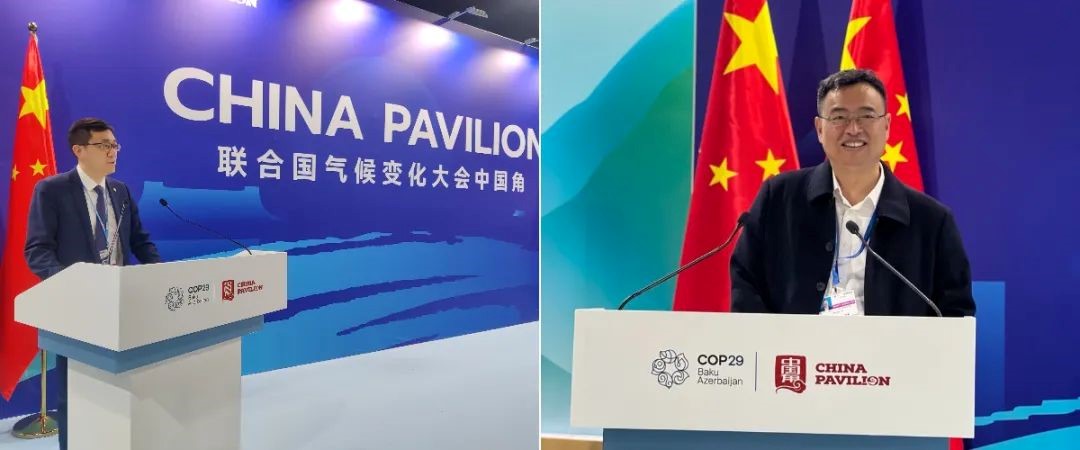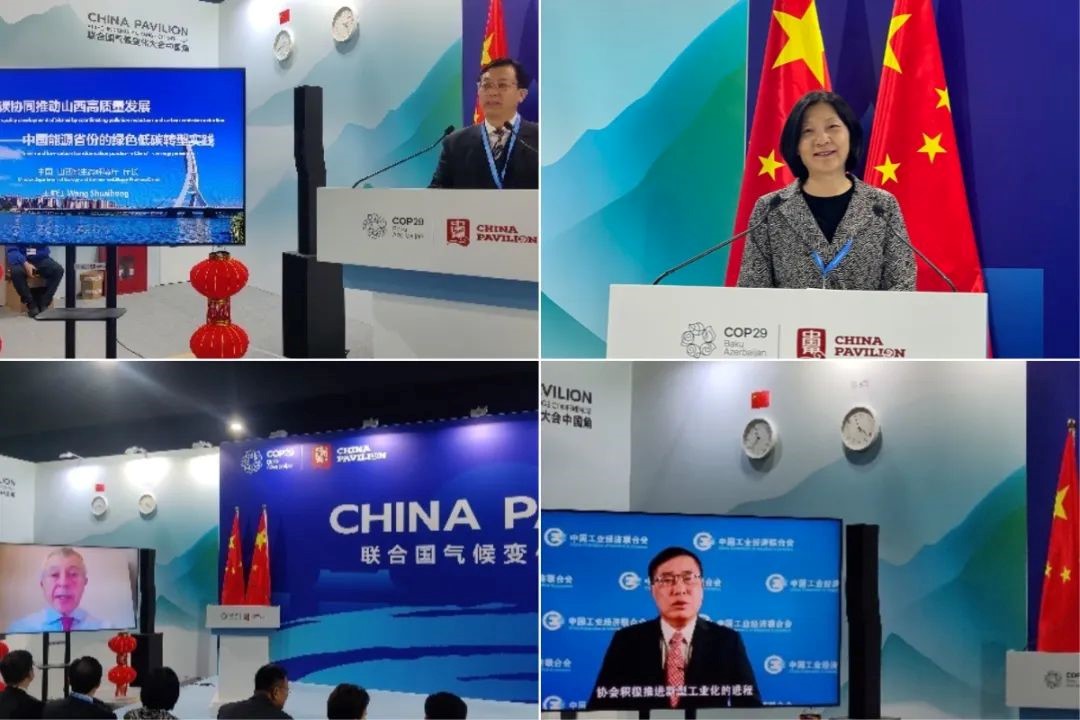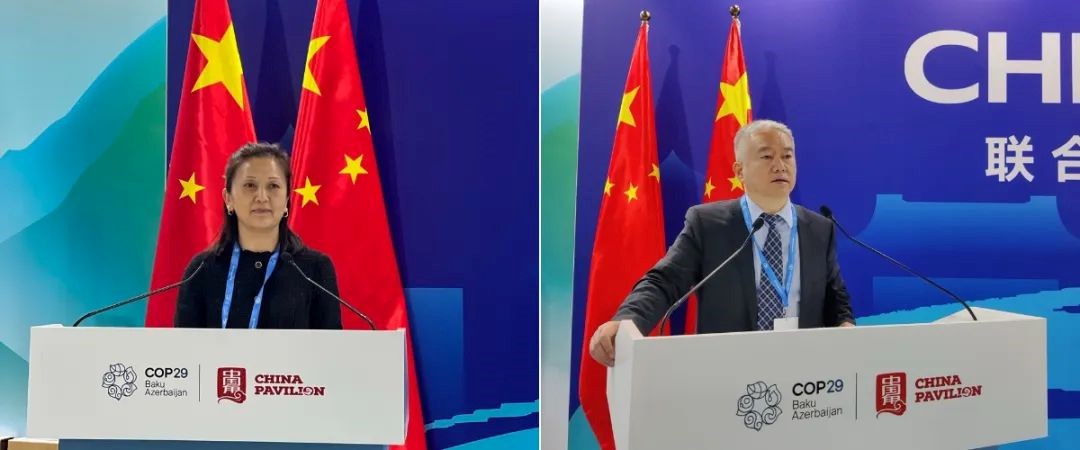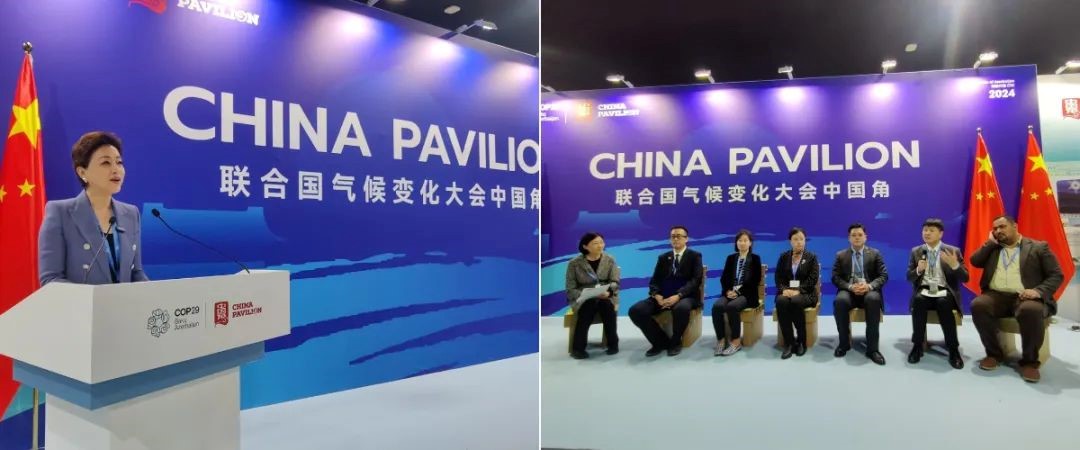
The 29th Conference of Parties (COP29) to the United Nations Framework Convention on Climate Change (UNFCCC) took place in Baku, Azerbaijan on November 11, 2024. The China Pavilion side event, “Collaborative promotion of pollution reduction and carbon reduction, promoting low-carbon transformation of industries”, was hosted under the lead of Chinese Research Academy of Environmental Sciences (CRAES) the next day.
Commissioned by Xia Yingxian, head of the Department of Climate Change of the Ministry of Ecology and Environment, Mr. Pei Liang, head of the Division of International Cooperation, gave the opening speech. Noting climate change as one of the gravest challenges facing humanity, he stressed that green and low-carbon industrial development is an important way to effectively tackle it. Promoting the synergy of pollution reduction and carbon reduction can facilitate the decarbonization of both the energy and industrial sectors. It is not only a key strategy for accelerating China’s transition to a fully green economy, but also an important step for China to participate in and guide global climate response efforts. China is willing to join hands with all countries to promote green, low-carbon, and high quality economic development.
Xi Beidou, vice president of CRAES, delivered a keynote speech. He pointed out that technological innovation is essential for promoting the synergistic effects of pollution control and carbon reduction, supporting the building of a beautiful China, and achieving the “carbon peaking and carbon neutrality” goals. As a national scientific research institution in ecological and environmental protection, CRAES focuses on the fundamental, strategic, and forward-looking technology to combat climate change. Centered on the technological demands of the green and low-carbon industrial transformation, the academy has systematically carried out foundational research, enhanced lab capabilities, conducted technological innovations and industrial applications, and supported the government in policies and standards formulation as well as environmental management. It has actively promoted the development of a national carbon footprint factor database and the alignment with international standards in green and low-carbon industrial development, providing effective technological support for enhancing the synergy between pollution reduction and carbon reduction.

Wang Shuaihong, director of the Department of Ecology and Environment of Shanxi Province; Dr. Paul Jefferiss, chairman and co-founder of the Climate Explorers and Natural Carbon Capital; Zhang Mengheng, chief engineer of CRAES; and Xiong Meng, Secretary-General of China Federation of Industrial Economics (CFIE), each delivered a keynote speech separately about coordinated promotion of pollution and carbon reduction for high-quality development of Shanxi, intergovernmental cooperation on energy transition, China’s innovative exploration for coordinated pollution and carbon reduction efforts, and actively advancing the process of new industrialization.

During the session where achievements were announced, Center for Pollution and Carbon Reduction of CRAES released the “Case and Series Report on Collaborative Efficiency Enhancement of Pollution Reduction and Carbon Reduction in 2024”, and the Carbon Peak and Carbon Neutrality Promotion Center of CFIE released the “Green Transformation Practice Report of Chinese Enterprises”.

During the signing ceremony, Yang Lan, one of the initiators of the Collaborative Capital Increase and Empowerment Plan for Pollution Reduction and Carbon Reduction and Chairwoman of Sun Media Group, released the Plan. The signing participants included Tongwei Group, Uni President Petrochemical Co., Ltd, Green Finance Training Base of China Carbon Market Capacity Building (Shanghai) Center, and Beijing Shilian Sustainable Education Technology Institute.

This side event presented China’s latest progress in supporting green and low-carbon industrial development through coordinated advancement in pollution control and carbon reduction. It shared China’s best practices in addressing climate change and promoting the green and low-carbon transformation of industries, and strengthened our exchange and communication with international counterparts on climate change response.